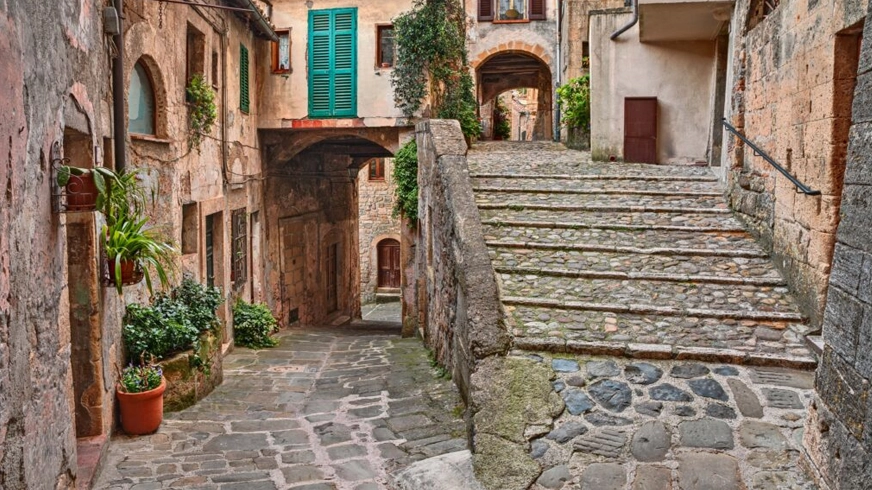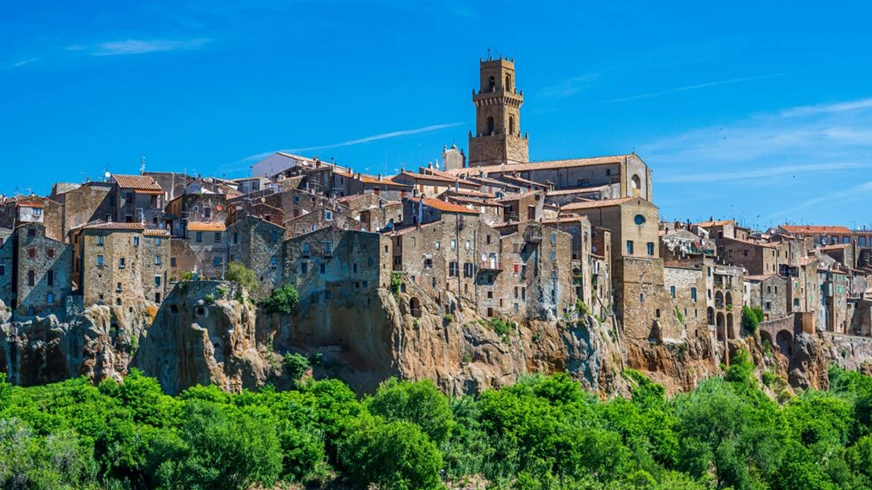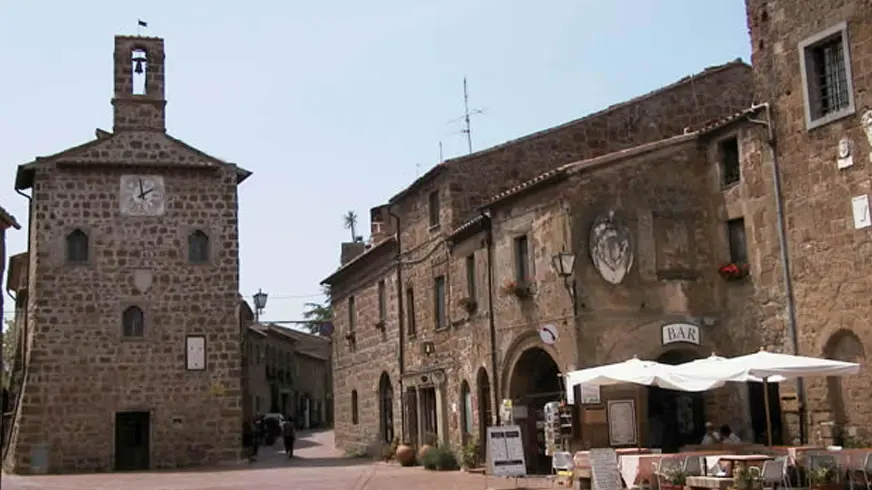Come and discover with us a journey through medieval villages and Etruscan cave paths.
- Sovana
- Sorano
- Pitigliano

Let’s explore together this small part of Tuscany, ancient Etruria, where humans and stone have forged an unbreakable bond for millennia. This has allowed scenic semi-underground paths, ancient necropolises, and numerous caves to remain intact until today. Not only trekking for these two days, but also plenty of wellness, immersed in the warm waters of ancient Jewish thermal baths, to restore your balance in a weekend just for you, filled with the scent of sweet pampering.
On this trip:
- You will discover a corner of Tuscany in all its authenticity, along with all its secrets.
- Accommodation in a beautiful charming property.
- Treks dedicated to discovering the natural and historical beauties of the area.
- You can relax at the “Jewish Baths of the 1800s” (thermal pool with hydro massages, cervical jets, and waterfalls) or at the hotel’s wellness center, equipped with a Turkish bath, Finnish sauna, and emotional shower.
- Fixed-menu dinners featuring dishes from the Maremma tradition (starter, first course, second course, side dish, dessert).
- Picnic lunches during the excursions.
- You will taste and appreciate the local flavors: a true immersion in zero-kilometer cuisine.

Pitigliano, Sorano, and Sovana: Stories and Curiosities of Three Villages Suspended in Time
Pitigliano… the Capital!
Few people know that this area was once known as the “Orsini County” and was a true independent buffer state between what was emerging as the Grand Duchy of Tuscany and the Papal States. The capital of this small state was none other than Pitigliano!
Close your eyes and imagine traveling back in time to the Middle Ages. It’s a late spring day. The sun peeks through the clouds of a somewhat uncertain sky, typical of this season. The scents of nature awakening surround you, filling you with that sense of eager anticipation—in the most positive sense—the kind that only the promise of something truly wonderful, like summer, can evoke.
You are a merchant, accompanied by your trusted mule carrying a cart full of goods to sell. You wander through the roads of this area, moving slowly between deep gorges. Around every corner, someone might be waiting to ambush you, ready to steal your load. You quickly scan the paths ahead, searching for potential escape routes in case something truly goes wrong.
Around you, nature reigns supreme, and you feel like a guest in someone’s home, filled with a deep sense of respect.
That’s exactly the feeling I experienced during a beautiful trek in this area, where history, nature, and archaeology seamlessly intertwine with one another.
Pitigliano was once known as a “Little Jerusalem”: its Jewish community is one of the oldest in Europe. Its proximity to the Papal States made it a favored destination for Jews expelled from the Church’s territory. Today, its significance is preserved in the ghetto quarter, which houses the synagogue and the cemetery.
The Jewish presence in this area is also remembered through one of its traditional desserts: the “sfratto”. The name refers to the edict issued by Cosimo de’ Medici in the 17th century, which ordered Jews living in these communities to relocate to the Pitigliano ghetto.
This treat is a true delight, made with eggs, honey, walnuts, and citrus zest. A symphony of authentic, genuine flavors—the kind that only the simple, time-honored recipes of the past manage to preserve intact through the ages.

Sorano, the Little Matera
Sorano is often referred to as the “Little Matera” due to the resemblance of its geological formation to the more famous Sassi of Matera.
This small medieval town has remained almost completely intact between its two city gates, the “Upper Gate” (Porta di Sopra) and the “Lower Gate” (Porta di Sotto), which enclose an enchanting atmosphere dominated by the Masso Leopoldino, an ancient fortification that seems to protect, rather than dominate, the entire village below.
The Orsini Fortress you can admire here is another testament to the town’s 14th-century splendor. Originally built in the Middle Ages, it was reinforced throughout the centuries. You might find it disproportionate compared to the rest of the village, which is truly tiny, but its strategic position made it vital as it defended the borders of the small buffer state I mentioned earlier.
Sovana and Its Period of Greatest Splendor
The nearby hamlet of Sovana is a pivotal center for Etruscan archaeology. It is here that you’ll find many of the known Etruscan necropolises, which can also be explored and experienced on our guided trekking tours. Along with the necropolises—rich with charm, mystery, and undeniable significance due to their purpose—you can also admire some of the most important examples of rock architecture created by the Etruscan people.
It’s fascinating to think that this small settlement, now reachable only by secondary roads and consisting of just a few narrow streets and two churches, was once one of the most important hubs in the region. Sovana was the birthplace of Pope Gregory VI and, until the 1300s, served as the capital of the vast Aldobrandeschi feudal estate—one of the richest and most powerful families of the era. Legend has it that the Aldobrandeschi could sleep in a different castle every night for an entire year without ever repeating the same one.
The history of Sovana took a different turn when "the Red Count" passed the fiefdom on to his daughter, Margherita. Since she was a woman and unable to rule, the only way for her to preserve this inheritance was to marry someone who could maintain and further enrich her father's legacy.
Margherita, for this reason, married no less than five times, while still keeping the dowry for herself. She ultimately ended up excommunicated for bigamy after marrying the nephew of Pope Boniface VIII.
Between Sovana and Sorano, there is something curious and unique to see, known as ‘Orlando’s Hand.’ It is a boulder with a rather enigmatic appearance, shaped like a closed hand. Legend has it that the paladin Orlando (the nephew of Charlemagne), who was here during the siege of Sovana, stopped to pray near the rock. He supposedly gripped it so tightly that he left the marks of his grasp embedded in the stone.
Today, we know that it is most likely a megalithic-era boulder used as an astronomical observatory.

